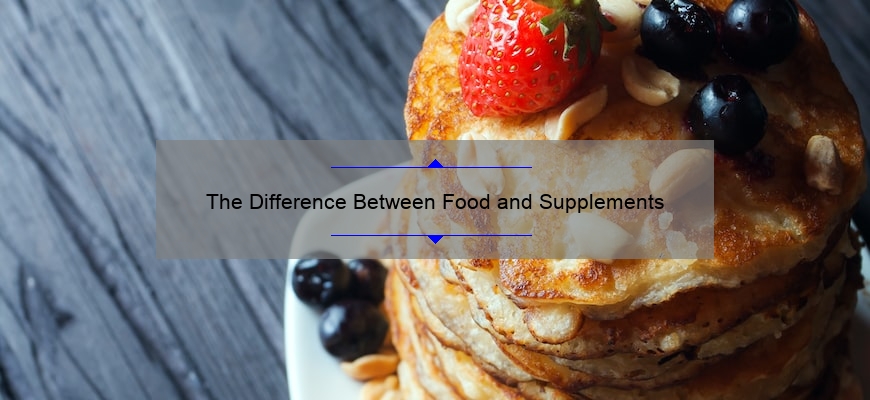Ginger and Cayenne Pepper Benefits
Ginger and cayenne pepper benefits go far beyond being more than flavor enhancers. This article delves into the myriad of health benefits these two powerhouses offer. From their rich nutritional profiles to their therapeutic uses and cultural significance, we explore how ginger and cayenne pepper benefits contribute to overall health and wellness.
Key Takeaways
- Ginger and cayenne pepper benefits include being pack vitamins, minerals, and antioxidants, which contribute to their potent health benefits.
- For centuries, people have used these spices medicinally, experiencing anti-inflammatory effects, improved digestion, and potential pain relief.
- Incorporating ginger and cayenne into your diet can boost metabolism and support weight management efforts.
- Current scientific research supports many of the traditional uses of ginger and cayenne, while ongoing studies continue to uncover new potential health benefits.
- The cultural and historical significance of ginger and cayenne pepper benefits highlight their enduring popularity and the continuous discovery of their health-promoting properties.
The Nutritional Profile of Ginger and Cayenne Pepper
Vitamins and Minerals in the Spicy Duo
When you dive into the nutritional world of ginger and cayenne pepper, you’re in for a treat that goes beyond just tantalizing your taste buds. The essential vitamins and minerals in these spices contribute to your overall health. Ginger, for instance, is rich in vitamin C, magnesium, and potassium, while cayenne pepper brings a punch of vitamins A, E, C, and B-complex to the table.
Ginger and cayenne pepper benefits aren’t just about the heat; they’re also about nourishment. Here’s a quick glance at what these fiery friends offer:
- Vitamin C: boosts immunity and skin health
- Magnesium: supports muscle and nerve function
- Potassium: crucial for heart health
- Vitamin A: important for vision and the immune system
- Vitamin E: acts as an antioxidant
- B-complex vitamins: aid in energy production
Remember, incorporating these spices into your diet can be a simple yet effective way to enhance your nutrient intake. Whether you’re sprinkling a bit of cayenne on your morning eggs or adding a slice of ginger to your tea, you’re doing your body a favor.
And let’s not forget about the antioxidant properties. Similar to other health-boosting spices like turmeric, ginger, garlic, and oregano, these two can help reduce disease risk. Dried herbs, such as cayenne, enhance taste and health with their antioxidant capabilities.
Dietary Fiber and Antioxidant Richness
You’ve probably heard that fiber is good for you, but did you know that ginger and cayenne pepper are both excellent sources? Ginger is rich in dietary fiber, which aids in digestion and helps you feel full, contributing to weight management. Cayenne pepper, on the other hand, is a powerhouse of antioxidants, including vitamin A, which is crucial for maintaining healthy vision and immune function.
Ginger and Cayenne Pepper Nutritional Highlights:
- Dietary Fiber: Supports digestive health and satiety
- Antioxidants: Protect cells from oxidative stress
Incorporating these spices into your meals not only adds a kick of flavor but also a boost of health benefits. Remember, a little goes a long way, so start with small amounts to gauge your tolerance. And as you enjoy the zesty flavors, take pride in knowing you’re nurturing your body with premium all-natural food.
Embrace the spicy duo as part of your healthy lifestyle. Their rich nutritional profile complements a balanced diet and supports your overall well-being.
Comparing the Caloric Content
When you’re trying to keep an eye on your calorie intake, it’s helpful to know the numbers behind what you’re eating. Ginger and cayenne pepper are both champions of flavor without the calorie punch. These spices are perfect for adding zest to your meals without the guilt. To illustrate the concept of high-volume, low-calorie foods, look at the calorie count of 100 grams of each:
| Spice | Calories (per 100g) |
|---|---|
| Ginger | 80 |
| Cayenne Pepper | 318 |
While cayenne pepper is higher in calories, both are still considered low-calorie options compared to many other foods. Plus, the amount you would typically use in cooking is minimal, so the actual caloric impact is quite low.
Remember, it’s not just about the calories, but the nutritional value these spices bring to the table. They’re packed with vitamins, minerals, and antioxidants that contribute to your overall health.
Therapeutic Uses and Medicinal Properties
Anti-Inflammatory Effects and Pain Relief
You’ve probably heard about the anti-inflammatory properties of ginger and cayenne pepper, but how exactly do they help with pain relief? Ginger contains gingerol, a substance with powerful anti-inflammatory and antioxidant effects. On the other hand, cayenne pepper contains capsaicin, which is known to reduce pain sensations when applied topically or consumed.
Incorporating these spices into your diet could potentially lead to reduced inflammation and pain, especially for conditions like arthritis. Here’s a simple way to start:
- Add a pinch of cayenne pepper to your favorite soup.
- Include a slice of ginger in your morning tea.
- Sprinkle ginger powder on your stir-fry dishes.
Remember, while these spices can contribute to pain relief, they should complement, not replace, medical treatments prescribed by your healthcare provider.
It’s fascinating to note that similar to the spicy duo, Mauby bark, a traditional Caribbean remedy, offers health benefits like anti-inflammatory properties. This highlights the global recognition of natural ingredients in promoting health and wellness.
Digestive Health and Nausea Prevention
When it comes to keeping your digestive system happy, ginger and cayenne pepper benefits are like your gut’s best friends. Ginger’s ability to ease nausea makes it a popular natural remedy for morning sickness or motion sickness. But that’s not all; it also helps stimulate saliva, bile, and gastric enzymes, which aid in digestion and can prevent discomfort after a heavy meal.
Cayenne pepper, on the other hand, is a well-known digestive aid and powerful anti-inflammatory. It stimulates the digestive tract, increases the production of digestive fluids, and soothes gas and stomach ache. Together, these spices not only add a kick to your meals but also support your digestive health in multiple ways.
While incorporating these spices into your diet, start with small amounts and observe how your body responds. Moderation is key to reaping the benefits without overstimulating the digestive system.
Remember, everyone’s body is different, so what works for one person may not work for another. Pay attention to how your body feels after consuming these spices and adjust accordingly.
Boosting Metabolism and Weight Management
You’ve probably heard that adding a little spice to your meals can kick your metabolism into high gear. Well, it’s true! Ginger and cayenne pepper are not just flavor enhancers; they’re also your allies in boosting metabolism and managing weight. Cayenne pepper, in particular, contains capsaicin, a compound that increases thermogenesis – the process your body uses to burn calories.
Ginger, on the other hand, isn’t just for settling your stomach. It’s believed to enhance thermogenesis too, and when combined with cayenne, can create a potent mix for your metabolism. But how much should you consume? Here’s a simple guide:
- Start with small amounts, like a pinch of cayenne or a teaspoon of ginger in your meals.
- Gradually increase as tolerated, paying attention to your body’s response.
- Aim for consistency rather than high doses; regular inclusion in your diet is key.
Remember, while these spices can aid in weight management, they should complement a balanced diet and regular exercise. Don’t rely solely on them for weight loss.
Incorporating these spices into your diet can be as simple as adding a dash of cayenne to your morning eggs or blending some ginger into your post-workout smoothie. And speaking of smoothies, did you know that ginger and pineapple juice are natural colon cleansers with benefits like weight loss and improved digestion? Homemade recipes often include ginger, lemon or lemon juice, and water for a detox and energy boost.
Culinary Delights: Incorporating Ginger and Cayenne into Your Diet
Spicing Up Recipes with Health in Mind
When it comes to enriching your meals with flavor and health benefits, ginger and cayenne pepper are your go-to spices. Incorporating these spices into your diet can be both delicious and beneficial for your well-being. Start by adding a pinch of cayenne to your morning scrambled eggs or mixing ginger into your smoothie for an invigorating start to the day.
Here’s a simple way to get started:
- Begin with small amounts to gauge your tolerance.
- Use ginger and cayenne to marinate meats or enhance vegetable dishes.
- Experiment with soups, stews, and sauces to find your preferred balance of spice.
Remember, the key is to use these spices in moderation to avoid overpowering your dishes and to maintain the enjoyment of your meals.
As you become more adventurous, explore recipes that specifically highlight the cardiac stimulant properties of these spices, such as the ‘Turmeric Shot with Apple, Ginger & Cayenne.’ Not only do they ignite digestion, but they also get vitality pumping through your body.
Creative Combos: Pairing with Other Beneficial Spices
When it comes to enhancing the health benefits of your meals, pairing ginger and cayenne with other spices can be a game-changer. Turmeric, for instance, is a fantastic addition that works synergistically with ginger, amplifying anti-inflammatory properties. Similarly, black pepper can increase the bioavailability of turmeric, making this trio a potent blend for your well-being.
Turmeric, ginger, and black pepper are not the only stars in the spice world. Consider adding garlic for its cardiovascular benefits or cinnamon for blood sugar regulation. Here’s a simple list to get you started on your spice journey:
- Turmeric: Anti-inflammatory and antioxidant
- Black Pepper: Enhances absorption of other spices
- Garlic: Supports heart health
- Cinnamon: Regulates blood sugar levels
- Ashwagandha: Reduces stress and anxiety
Embrace the power of spices to transform not just the flavor of your dishes, but also your health. Start small, with just a pinch or two, and adjust according to your taste and tolerance.
Dosage and Safety: How Much is Too Much?
When it comes to spicing up your meals with ginger and cayenne, it’s important to strike the right balance. Too much of a good thing can lead to discomfort, such as heartburn or an upset stomach. For Cayenne, the recommended dosages of supplements can vary widely, depending on factors like your age, weight, and overall health.
- Start with small amounts in your cooking and gradually increase to taste.
- Pay attention to how your body reacts to these spices.
- Consult with a healthcare provider before taking concentrated forms like supplements.
Moderation is key. While these spices can offer health benefits, excessive consumption may cause issues.
Remember, everyone’s tolerance to spicy foods is different. It’s best to listen to your body and adjust accordingly. If you’re considering supplements, especially for cayenne, make sure to follow the guidelines on the product label and seek professional advice if you’re unsure.
Scientific Studies and Clinical Research
Evidence-Based Health Benefits
You’ve probably heard a lot about the spicy kick that ginger and cayenne pepper can add to your meals, but did you know that their benefits go beyond just flavor? Scientific research has confirmed a variety of health benefits associated with these fiery ingredients.
Ginger, for instance, has been shown to be effective in reducing nausea, especially during pregnancy and after chemotherapy. Cayenne pepper, on the other hand, contains capsaicin, which has been studied for its pain-relieving properties.
When it comes to your health, ginger and cayenne are more than just seasonings; they’re natural allies in your wellness journey.
Here’s a quick rundown of some evidence-based perks:
- Alleviates digestive issues
- Boosts immune function
- Reduces inflammation
- Aids in weight management
Remember, while these spices are powerful, they’re not a cure-all. It’s important to use them as part of a balanced diet and healthy lifestyle.
Ongoing Research and Future Potential of the many Ginger and Cayenne Pepper Benefits
As you dive deeper into the world of spices, you’ll find that the journey of discovery is far from over. Ongoing research is continuously uncovering new ways in which ginger and cayenne pepper benefits can enhance our health. Scientists are particularly excited about the synergistic effects when these spices are combined with others, like turmeric, which could amplify their benefits.
- Exploring the trio of cayenne pepper, turmeric, and ginger for comprehensive pain management.
- Investigating the metabolism-boosting properties of cayenne pepper for weight loss strategies.
- Examining the long-term effects of regular consumption on chronic diseases.
The potential of ginger and cayenne pepper benefits extends beyond current knowledge, promising exciting discoveries for future health applications.
The spicy duo has already made its mark, but the future could reveal even more powerful health impacts. Stay tuned as researchers continue to spice up the world of medicinal plants.
Debunking Myths: What Science Says about Ginger and Cayenne Pepper Benefits
There’s no shortage of bold claims and old wives’ tales when it comes to ginger and cayenne pepper benefits. But let’s focus on what the science actually tells us. Not all benefits attributed to these spices are backed by solid evidence. For instance, while many believe that consuming these spices can cure common colds outright, research suggests they may only alleviate some symptoms due to their anti-inflammatory properties.
Myth vs. Fact:
- Myth: Ginger and cayenne can completely prevent illnesses.
- Fact: They may support immune function but are not a cure-all.
- Myth: These spices can replace prescription medications.
- Fact: They should complement, not replace, medical treatment.
Remember, moderation is key. Excessive consumption of any spice can lead to adverse effects, so it’s important to enjoy ginger and cayenne as part of a balanced diet.
Before you start adding heaping spoonfuls of ginger or cayenne to your meals, consider the dosage. While a little can contribute to your health, too much might cause irritation or discomfort. Always consult with a healthcare provider if you’re considering them for therapeutic use, especially if you have underlying health conditions.
Cultural Significance and Historical Use
Traditional Remedies Across the World
As you delve into the world of traditional remedies, you’ll find that both ginger and cayenne pepper have been revered for their healing properties. Ginger, with its warm, spicy kick, has been a staple in Asian medicine for centuries, used to soothe sore throats and combat nausea. On the other hand, cayenne pepper, known for its fiery heat, has been utilized in Native American medicine as a pain reliever and to improve circulation.
Ginger and cayenne pepper benefits have also found their way into numerous home remedies across the globe. Here’s a quick look at how different cultures have embraced these spices:
- In India, ginger is commonly used in teas and decoctions to fight colds and flu.
- Central American traditions include cayenne in tonics for its detoxifying effects.
- European folk medicine has long used ginger as a digestive aid.
While modern science continues to explore the full extent of their benefits, the anecdotal evidence of ginger and cayenne’s efficacy is substantial and deeply rooted in cultural practices.
Remember, while these spices are powerful, they are not cure-alls. It’s important to consider them as part of a balanced approach to health. Embrace the wisdom of the past and let these time-tested spices add a kick to your wellness routine, but always in moderation.
The Evolution of Ginger and Cayenne in Cuisine
As you dive into the world of spices, you’ll find that ginger and cayenne have been culinary staples for centuries. Their journey from traditional medicine to kitchen essentials is a testament to their versatility and robust flavors.
Ginger, with its warm, zesty kick, has been a favorite in Asian cuisine, while cayenne’s fiery punch has spiced up dishes in the Americas. Over time, these spices have crossed oceans and cultural boundaries, integrating seamlessly into global gastronomy. Here’s a quick look at how they’ve spiced up various cuisines:
- Asian: Ginger is a cornerstone, used in everything from stir-fries to teas.
- Indian: Both ginger and cayenne are key in curries and chutneys.
- Middle Eastern: Ginger adds warmth to sweet and savory dishes alike.
- Latin American: Cayenne brings heat to salsas and meats.
- European: Gingerbread and spiced wines showcase ginger’s sweet side.
Embracing these spices not only enriches the flavor profile of your meals but also infuses them with health-promoting properties.
Remember, while it’s exciting to experiment with these flavors, it’s important to balance taste with nutritional benefits. The spicy duo can be powerful, so start with small amounts and adjust according to your palate and dietary needs.
Modern-Day Popularity and Trends
Ginger and cayenne pepper have surged in popularity, becoming staples in the pantries of health enthusiasts and culinary adventurers alike. Their presence in the dried spices market is significant, with forecasts showing continued growth. In fact, by 2032, the market is expected to see a substantial increase in demand for these fiery ingredients.
- Ginger is celebrated for its zesty kick and health-promoting properties.
- Cayenne pepper is revered for its metabolism-boosting heat.
Both spices are now commonly found in various forms, from fresh roots to powdered versions, making them accessible to a wider audience. You’ll find them enhancing the flavors of everything from morning smoothies to elaborate dinner dishes.
Embracing these spices not only adds a burst of flavor to your meals but also contributes to a healthier lifestyle. Their integration into modern diets is a testament to their versatility and enduring appeal.
Conclusion
In conclusion, ginger and cayenne pepper benefits don’t just come from being culinary spices that add flavor to our dishes; they are a potent duo with remarkable health benefits. From aiding digestion and reducing inflammation to boosting metabolism and improving cardiovascular health, these spices have proven to be valuable in promoting overall well-being. As we have explored their individual and combined effects, it’s clear that incorporating ginger and cayenne pepper into our diets can be a simple yet effective way to enhance our health. Whether through a warming tea, a zesty meal, or even a supplement, the spicy synergy of ginger and cayenne pepper is an accessible and natural means to support a healthier lifestyle.
Frequently Asked Questions
Ginger and Cayenne Pepper Benefits: What are the main health benefits?
Ginger and cayenne pepper have anti-inflammatory properties, promote digestive health, relieve pain, and boost metabolism to manage weight.
How can ginger and cayenne pepper be incorporated into a daily diet?
These spices can be added to various recipes, including soups, stews, teas, and smoothies, or taken as dietary supplements in the form of capsules or shots.
Are there any risks associated with consuming ginger and cayenne pepper?
While generally safe for most people, excessive consumption can lead to gastrointestinal irritation or interact with certain medications. It is important to consult with a healthcare provider before adding them to your diet in large amounts.
Ginger and Cayenne Pepper Benefits: can they help with weight loss?
Yes, both ginger and cayenne pepper have been shown to boost metabolism, which may aid in weight loss efforts when combined with a healthy diet and exercise.
What is the cultural significance of ginger and cayenne pepper?
Ginger and cayenne pepper have a rich history of use in traditional remedies across the world and have evolved to become popular ingredients in modern cuisine.
Ginger and Cayenne Pepper Benefits: Is scientific evidence supporting the health benefits?
Yes, numerous studies have investigated the therapeutic properties of these spices, providing evidence-based health benefits for a range of conditions.







